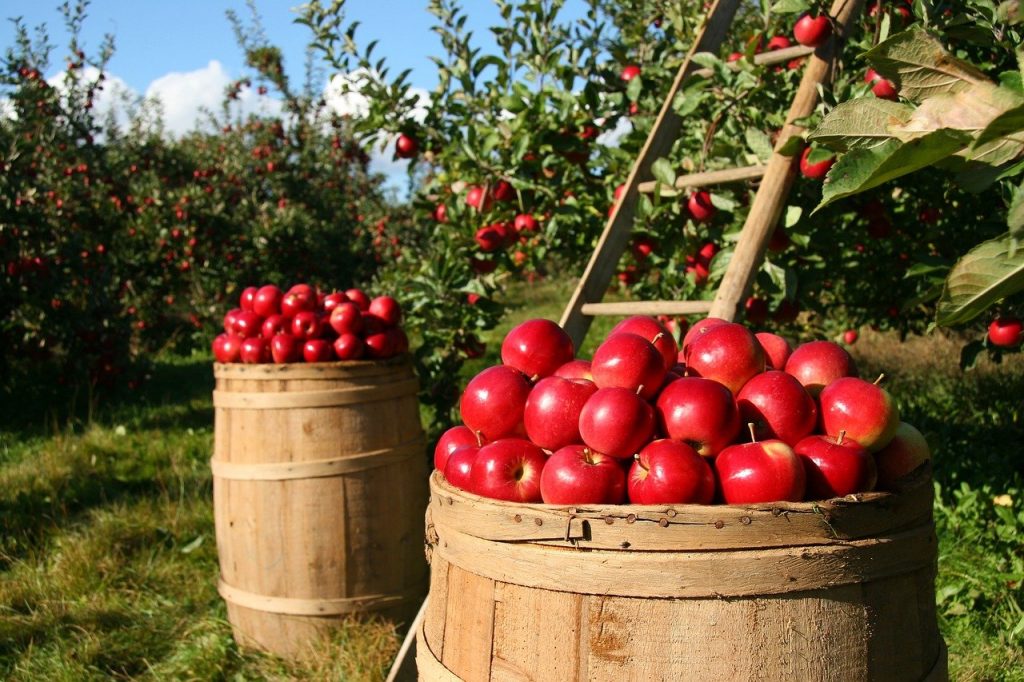Before the first frosts we need to prepare our garden for the arrival of winter. Good plant protection is essential if we want to enjoy a beautiful garden again in spring. There is a lot of work ahead for gardeners!
We mow the lawn less often in autumn than in summer. First we need to clear the lawn of fallen leaves, moss and branches. To make the work go more smoothly, you can get a vacuum cleaner with a blower. The collected leaves should be used for composting.
The last mowing should be done at the turn of October and November. Remember to cut the grass a little higher, about 5 cm, so that the lawn doesn’t freeze in winter. If the grass is left high, snow mold can develop. For better grass growth in spring, it is best to fertilize the lawn in combination with aeration. The aerator loosens the soil and aerates it so that it grows better. For fertilizing, you can use ready-made mixtures with phosphorus and potassium. It is not recommended to use fertilizers with nitrogen in autumn
Most fruits and vegetables are harvested from September onwards. So if you have fruit bushes and vegetables, be sure to harvest to prevent them from freezing. You can also harvest herbs, rosehips or hawthorns and make medicinal tinctures from them.

Trees, shrubs and perennials overwintering in soil should be protected against frost. You can use mulch, pine and spruce twigs for this purpose. In case of shrubs mounding is helpful. Cover the base of the plants with soil, leaves or sawdust to a height of 20-40 cm. This method works well in the case of climbing plants. To cover the plants you can also use jute or non-woven fabric. Remember not to wrap the plant too tightly, because you can damage the shoots. This method of covering works well with climbing roses, hydrangeas and fruit bushes.
Before the first frosts, we need to hide the plants that decorated our balcony and terrace. Not all flowers are resistant to low temperatures, and overwintering them will allow us to enjoy the eye in the next spring-summer season. Such flowers include: geraniums, myrtle, oleander, datura, fuchsia.
Bulbous plants, which we dig up for the winter, include: begonias, dahlias, gladioli, tigress, canna, freesias, lilies. After cleaning, we dry the bulbs to prevent them from rotting or moulding and store them in a dark place with a temperature between 5-10 degrees Celsius. The bulbs can be lightly covered with sand
Already in the first days of spring, the first flowers start to bloom in our garden. Their bulbs are planted in autumn. When choosing bulbs, pay attention to discoloration or damage. You should also not plant bulbs that are dried out, rotten and without scales covering them. Do not buy such, which have put out roots, because they will freeze and will not bloom in spring. Such flowers include: crocuses, snowdrops, onions, checkerberries, narcissi, tulips, lilies, hyacinths, sapphires, ornamental garlic, anemones and scythe. Plant the bulbs in a sunny place without weeds. Dig a hole three times bigger than the bulb itself and plant them with the heel facing down. To protect them from being eaten by rodents, we can use special planting baskets.
It is worth remembering that, as with bulbs, there are also flower seeds that we should sow in the autumn. Such flowers include marigolds, robin’s mantle, gypsophila, sagebrush, forget-me-nots, melilot, hollyhocks, violets, hellebores and cornflowers. Fall is also a good time to plant new fruit bushes.
If you have a pond, don’t forget about the fish living in it. They should be fished out and overwintered in a warm and bright place, preferably at home in an aquarium. Some aquatic plants are also not suitable for winter. Such plants include ciborium, Carolinian azolla, salvinia, water hyacinth and water lilies
Water features such as fountains, water pumps, and water features should be stored away for the winter to avoid possible damage.
To clean the pond remember to fish out fallen leaves from trees. Small ponds should be stripped of water and cleaned of sediment.
During the winter, we can help wildlife survive the cold weather. A great idea will be to leave a mound of leaves for hedgehogs, which are protected in Poland. We can also make a special house. We choose a quiet area for it, preferably by a wall or a wall. With bricks laid a corridor or maze to make it difficult to enter. The hedgehog house should be about 35 cm high, 40-50 cm long and a similar width. Then we cover the whole thing with leaves. You can also buy ready-made hedgehog houses and fill them with hay.
Bird feeders will work great on trees. These will help tits and sparrows, for example, survive the winter